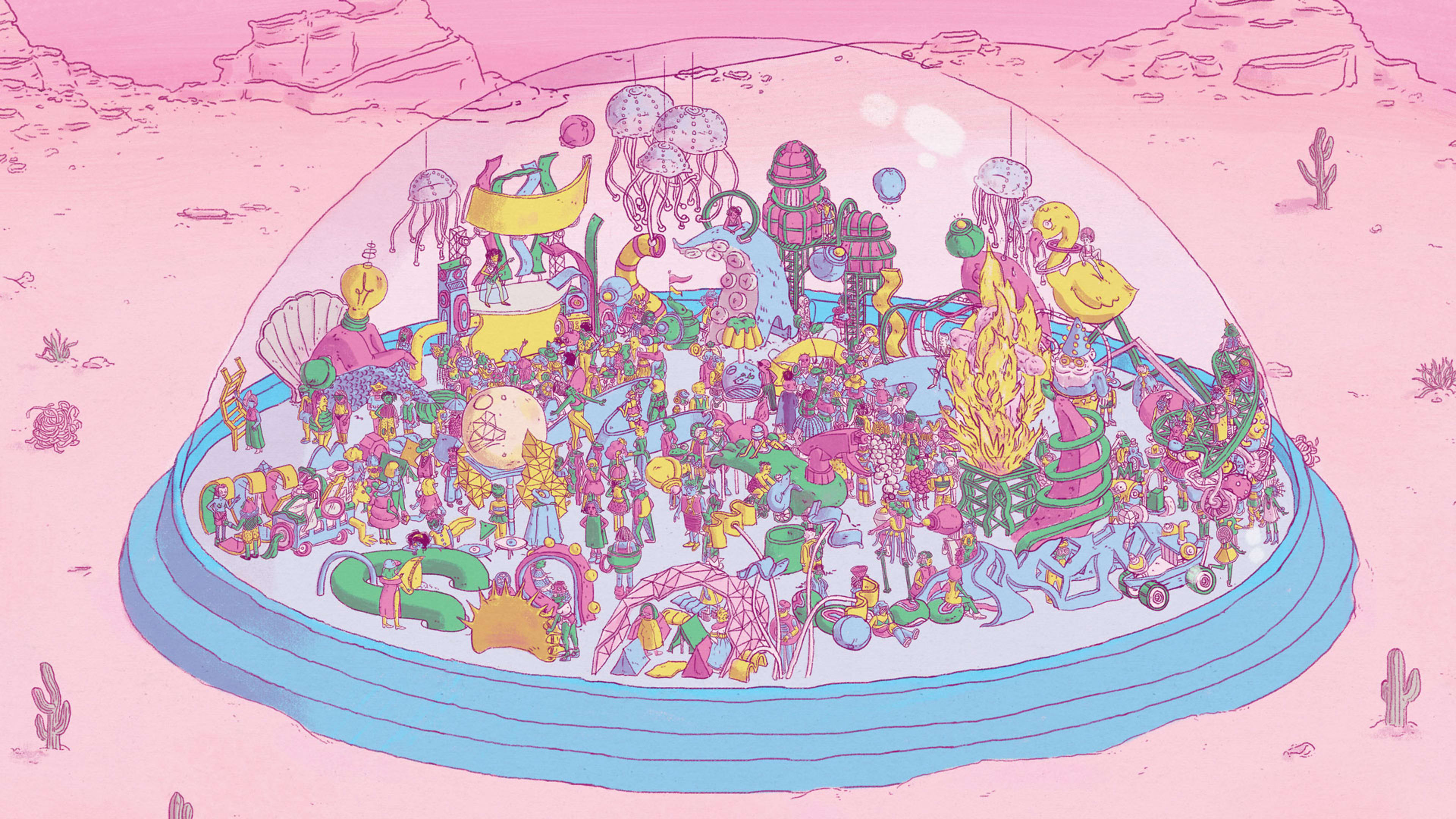It was midweek in Black Rock City, Nevada, and the burners were looking disheveled. Days of camping, cooking, exploring, and partying with limited resources on the remote arid terrain where Burning Man is held at the end of August each year had stripped most attendees of any polish they had arrived with.
But one cohort looked suspiciously well-preserved. They appeared freshly showered in their carefully selected getups, often some combination of wings, glitter, and exposed midriffs. They looked as though they were heading to a photo shoot—and some of them were, posing for Instagram-worthy desert pics with all the relevant hashtags. While most of the 70,000-plus Burning Man attendees were bunking in RVs and makeshift tents, a growing number of these polished burners had more luxurious digs: all-inclusive camps with air-conditioning, showers, reliable Wi-Fi, and large beds. One boutique-hotel-style fortress, called Camp Humano, featured a selection of “bedouin tents” ($25,000 a week) and two-bedroom lodges ($100,000 a week), along with “personal sherpas” for guests. Humano’s organizers had promoted these accommodations online as “the perfect place to escape from all the madness.”
Over its 33-year history, Burning Man, an eight-day-long experiment in radical, commerce-free living, has drawn a wildly diverse crowd. It’s been home to hippies, artists, and activists; pranksters, ravers, and techno-utopians; punk, grunge, and EDM enthusiasts; libertarians, socialists, and even billionaires. They’ve all embraced—to varying degrees—the 10 principles that founder Larry Harvey laid out in 2004, including self-reliance, self-expression, inclusion, gifting, and decommodification. But during the 2018 event, many longtime denizens of the playa (burner parlance for the Black Rock Desert) found themselves running into a group that even they had trouble assimilating. The influencers had arrived.
Although Burning Man’s organizers avoid the term “festival,” preferring to call it a “catalyst for creative culture,” the event is part of a global boom in culturally focused, cross-disciplinary gatherings that today include everything from Pharrell Williams’s new Something in the Water music and ideas festival and Gwyneth Paltrow’s Goop Wellness Summit to stalwarts like the Frieze art fairs and South by Southwest. Live music events alone are forecast to grow from a $25.6 billion to a $31 billion global industry by 2022. Coachella, for example, drew 125,000 attendees during each of its two weekends in 2017 and took in $116 million, a tenfold increase from 2007, fueled by ticket and merchandise sales, corporate sponsorships, and other brand partnerships. 2018’s Coachella event generated 4 million hashtags, many of them from social media influencers using the festival as a backdrop for a product plug.
Recognize your brand’s excellence by applying to this year’s Brands That Matter Awards before the early-rate deadline, May 3.
